Buy Splatoon 3
Nintendo isn't always the fastest to catch onto trends, but when it does, it usually finds an interesting twist. Splatoon was the attempt of an online shooter that appeals to all ages and skill levels. Splatoon 2 took over my life when it was released five years ago, and if my Switch didn't break shortly after that, effectively wiping all my progress, I would've probably stuck with it. I've been playing Splatoon 3 for the last weekend and find myself once again glued to my Switch. Admittedly, Splatoon 3 doesn't make any attempts to bring Splatoon to the next level, but it takes the foundation of Splatoon 2 and fine-tunes or streamlines where necessary. The third entry isn't free of annoyances, but it's the best version of Splatoon that I have played.
Let's set aside the rose-tinted glasses for a second.
It's very easy to look at Splatoon 3 and be somewhat let down. The first title introduced the signature gameplay, and the second game added Salmon Run, which has since become a core pillar of the franchise. The third entry does none of that. On the surface, Splatoon 3 adds new weapons and gear, new and overhauled maps, a card-collecting minigame on the traditional multiplayer front, a few extra bosses in Salmon Run, and a new story mode. The rest is familiar territory. If you're a new player, that won't matter too much, but if you're a Splatoon veteran, you may have hoped for more.
It's a different kind of "more." Splatoon 3 will receive support in the form of updates for up to two years after release, and if the previous entry is anything to go by, we can expect quite a few interesting additions over time.
However, Splatoon 3 is worth your money right now because it is still as strangely adorable as it is addictive. Each player takes control of an Inkling — essentially an evolved squid — to go head-to-head in teams of four across different game modes. All of them revolve around shooting different-colored ink at each other.
Given the absence of new modes, there are three ways to spend your time competitively in Splatoon 3. In Turf war, the casual quick game mode, each team tries to have the highest percentage of the map painted in its own color. Then there are Anarchy Battles and Anarchy Series, the ranked and league competitive modes, which have seen some minor changes but still offer the same gameplay modes: Clam Blitz, Rainmaker, Splat Zones and Tower Control.
The most notable change is that it's now relatively easy and without consequence to play a single ranked battle. As soon as you're ranked, you can jump into anarchy battles and receive points to increase your rank or lose a fraction of them when you taste defeat. Since you lose only a quarter of what you gain, it's a slow but steady way of ranking up. If you're pushing for a challenge, you can bet a substantial amount of your total rank points to participate in an Anarchy Series, where you'll get rewarded big once you win five battles — but lose all your points when you lose three. It's an interesting concept that makes ranked games more accessible for new players without being punished, while still offering a riskier competitive mode for higher-skilled players.
There were some tweaks to individual game modes for balancing purposes. Rainmaker, where we have to carry a powerful but unwieldy weapon across the map, now has a mandatory checkpoint during the journey. It was likely introduced to prevent matches from ending too quickly. Clam Blitz, where clams need to be carried across the field and thrown into the enemy's clam basket, now spawns more clams closer to your spawn point, and the number of clams needed to start scoring has decreased. It's never been my favorite mode, but the changes make it easier to score and thus make for more interesting and varied battles. Tower Control and Splat Zones are still mostly the same, without any major changes.
The commitment to balance is felt across Splatoon 3. Returning maps have been adjusted where needed, and weapons and modes have received some balancing changes. As a result, the game feels even more frantic than the prior entries, and it has even more variety. It doesn't matter which mode you play, but you usually reach the action quicker. Matches are much more open and can sway in any direction up until the last seconds. Many of the new special attacks are actively driving this, with many of them requiring you to be in the middle of the action when you fire them off.
The newly added maps add to that. Whereas Splatoon 2 was released with eight maps, Splatoon 3 currently has 12, seven of which are returning maps from previous entries. The new maps are usually rather large and wide, offering a ton of opportunities and nooks and crannies to advance and sneak behind enemy lines. Controlling the front line has become harder in some of these maps, which again means that matches go back and forth between skilled teams. A single mistake is all that it takes to end it all in one's favor. There isn't necessarily a standout among the new map additions, but none of them are bad choices, either. It's a strong showing with plenty of variety, and we will probably see further maps added throughout the next months to pad out the experience.
Another big change is the addition of two new weapons: the Splatana and the Stringer. The former is a katana-like weapon that is good between ranged combat and close combat; it has decent damage output and a surprising range. It's become my favorite weapon in both light and heavy variants, mostly because it looks cool. The Stringer is a triple-bow that fires either ink or charged ink bombs at enemies in wide cones that offer excellent spread and a potent ranged attack. The existing arsenal ranges from brushes to ink rifles, so anyone should be able to find a favorite weapon or two.
If that ever gets boring, Splatoon 3 retains the gear and ability systems of the previous entries. While the weapon shop always offers the same items based on your progress, other shops offer a daily changing roster of gear to acquire (and even a free battle pass). The gear holds a variety of ability slots that are randomly determined as your gear levels up. This means there is a growing variety in outfits and small game modifiers that will keep players busy in putting together favorite looks and builds.
Should that ever get boring, Salmon Run is still a standout mode that becomes incredibly difficult while it keeps you guessing. The four-player horde mode pits your team against waves of salmon-oid enemies and an extended roster of minibosses that drop golden eggs to collect. Each wave has a quota of eggs to fulfill, and if you return with fewer eggs or your entire team is incapacitated, the game's over. Apart from the minibosses (and one special boss that may appear at certain intervals during a bonus round), this mode has remained the same — except for the ability to throw golden eggs.
Multiple games on the same map can vary drastically. Splatoon 3 controls the water level to change the size of the map in each round, spawn points are shuffled, fog and special enemy waves may appear at random, and each player gets a random loadout for each wave. It's always fresh, challenging, and a ton of fun, especially if you can get a few friends together to play cooperatively. Salmon Run adds some good variety to the title, especially since it has a separate ranking and reward system that features items like cosmetics, food tickets that boost money, or XP in online matches. I love alternating and breaking up the gameplay by going back and forth for a couple of matches.
Each Splatoon game thus far has featured a single-player mode, and Splatoon 3 is no exception. Wrapped in a cohesive story and cut scenes, Hero mode sees our Inkling solve the mystery of fuzzy goo that's suddenly growing all over the place. One could consider this mode to be a collection of small stages that you can complete in minutes (like in Splatoon 2), but that would do the mode a disservice. It takes great inspiration from other Nintendo titles, specifically Mario games, to come up with new ideas for almost every single stage, and it stops using the ideas before they overstay their welcome. Not only are these stages a delight to play, but they are surprising and quick to complete, so they're a fun distraction.
If you want to find all items in the overworld and complete all of the stages, Splatoon 3 features up to seven hours of content. The entire story is told across six islands, each overgrown with fuzzy goo. As we remove the fuzzy goo, new levels become accessible, so you have some influence on the order of missions. It's fun, and it even unlocks items that carry over to the online experience. The boss fights include an epic final stage, making this single-player component worth checking out. If anything, the enemy variety is unchanged from previous games; I would've liked to see a few more additions, but that doesn't change the quality on what's here.
There are some additions that I couldn't get much out of, but they don't affect the gameplay too much. In the card minigame, card packs are earned in a variety of ways, so you can curate a deck to challenge AI opponents. In essence, this works like the traditional Turf War mode. Each card has a different color shape, and to win, one must paint most of the playing field in their color. This hasn't captured my attention because I'm not sure of its purpose. It is a fine and fun little card game, but it feels like a bare-bones afterthought.
Each player can decorate their locker with cosmetic items. I haven't had the urge to use this feature extensively because there is rarely a moment to look at other players' lockers. This feels like adding things for the sake of adding things. Maybe it's to boost the number of items that players can earn through playing and engagement, so there's a steady stream of gear and cosmetics, but it feels a tad pointless. There is no obligation to dabble with either if you don't want to.
Splatoon 3 is the best Splatoon. It's simple as that. The gameplay is largely unchanged, but it's been refined to the point that it's almost easy to forget that we didn't see a big new addition in this entry. The entire experience feels much more user-friendly and streamlined. Splatoon 2 sometimes felt like it actively discouraged me from playing. Salmon Run was only playable at certain times on certain days. In Splatoon 3, it's available whenever you'd like. There's still an announcement of which modes and maps are currently in rotation when you start the game, but it's skippable now. It's still not the most straightforward UI or interface, but you spend much less time within the menus. Instead of waiting in a lobby, we now have a training course to throw some ink around while we wait for matchmaking; it makes it less tedious to wait for matches.
Modes and maps are still rotating constantly. Every two hours, two maps per game mode are available. This aids players in learning to play specific maps better through repetition, but if you have a favorite map to replay, this is probably less ideal. Splatoon 3 is a great game to pick up for a quick round without jumping through arbitrary hoops. Loading times are super quick, especially for the Switch. More importantly, the ability to skip the intro makes it easier to get into a game quickly and without hassle.
It still has flaws, of course. I could do without Sheldon, the weapons merchant, explaining every new weapon in excruciating detail when I visit the shop, and the online infrastructure Nintendo provides is still noticeably behind the competition. Matches get thrown regularly because of player disconnects, and matchmaking can vary drastically from super quick to exhaustively long. This is especially frustrating since you cannot leave matchmaking after a certain point and must either sit it out or wait to the end of the game. This might ease over time as Nintendo is catching up with the influx of players, and it's not happening all the time, but there is still a lot of room for improvement on that end.
Splatoon 3 is very light on content additions, but it is easily one of the best online multiplayer games I've played. Its weird concept and fun gameplay across a variety of modes and maps are as fun and addictive as they have always been, but the title lacks a big new feature. Instead, Splatoon 3 focuses on streamlining the existing experience by removing a lot of the hurdles that Splatoon 2 had imposed. While the online experience was a bit shaky during the first days, Splatoon 3 has a mighty journey ahead with two years of guaranteed updates on the horizon, and it can only get better and more interesting from here.
Score: 8.7/10
More articles about Splatoon 3


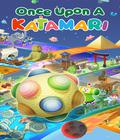

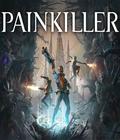
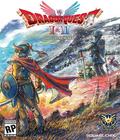



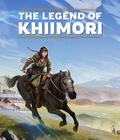

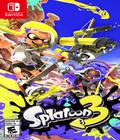 Splatoon 3 is the next installment in the 4 vs. 4 action shooter, leaving Inkopolis behind and heading to a new region: the Splatlands.
Splatoon 3 is the next installment in the 4 vs. 4 action shooter, leaving Inkopolis behind and heading to a new region: the Splatlands.


















































